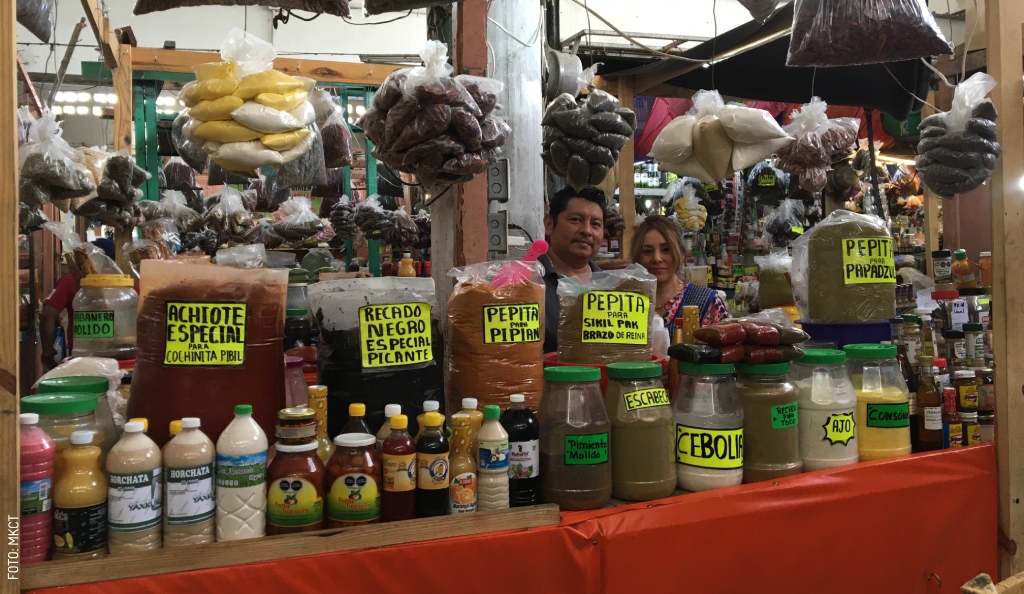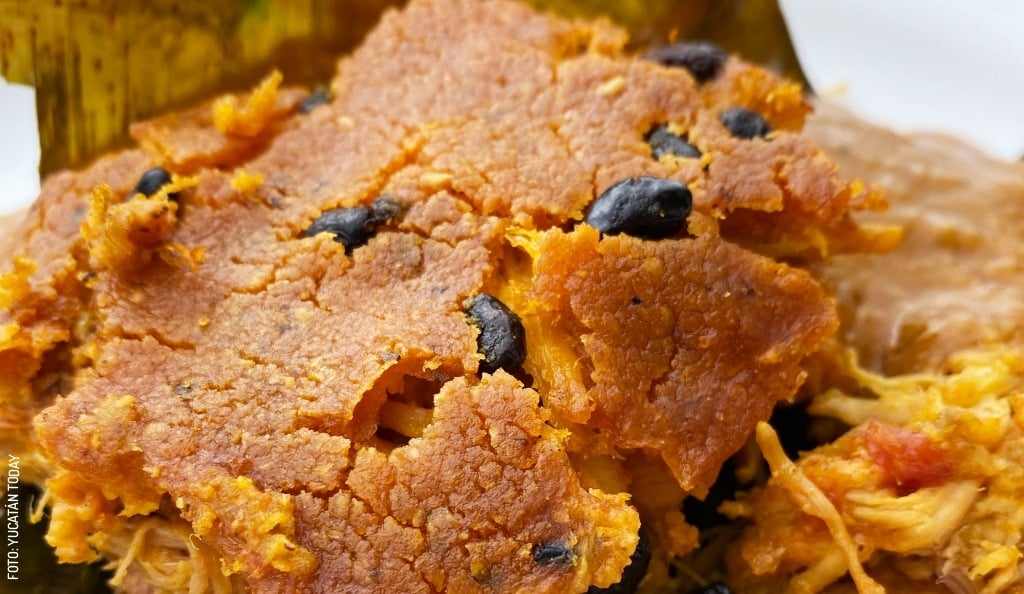
An authentic recipe for Yucatán’s mukbilpollo or pib—for beginners
An Easy Way to Prepare Mukbilpollo at Home, An authentic recipe for Yucatán’s mukbilpollo or pib—for beginners
Pib, also known as mukbilpollo, is the star dish of the Day of the Dead season in Yucatán, also known as Janal Pixan. While you can have it at a restaurant or order one to take home, why not try making it yourself? You don’t need to dig a hole in the ground; your oven will do just fine. Here’s an authentic Yucatecan recipe for pib or mukbilpollo. Let’s get cooking!
Note: In Maya, píib refers to the underground oven used to cook mukbilpollo, and it’s also the term used for the dish itself. To avoid confusion, at Yucatán Today, we refer to the dish as pib and the oven as píib, even though the same word is used in Maya.
What is mukbilpollo or pib?

Mukbilpollo is a special kind of tamal that is traditionally cooked underground, in an oven called píib. Because of the symbolism involved in its preparation, it is considered a special dish for returning souls, and considered by some to be the only one they can take back with them to the underworld.
Mukbilpollo is crunchy on the outside and gooey on the inside. In addition to meat (usually chicken or pork), its filling comprises k’óol (a broth thickened with masa), tomato, onion, epazote, and sometimes Habanero. Some varieties also include hard-boiled eggs, and recent creations even make them with Lomitos, smoked sausage, or chicharra. The crunchy crust may be sprinkled with espelón (black eyed peas).
A beginner's dictionary
Píib
Píib is the Maya name given to a hole in the ground, filled with firewood and rocks. Once the (well covered) food is placed in it, it is covered with leaves and dirt to trap in the heat.
K’óol
This preparation, also known as Yucatecan pebre, is prominently featured on many traditional Yucatecan dishes. It is basically a broth thickened with corn flour or masa.
Espelón
Espelón (black eyed peas) are a bean variety that’s harvested in Yucatán this time of the year. Espelón beans are mixed into the masa of different types of tamales, providing unique flavor and texture, but its addition is based on people’s own tradition and taste.
Síis k’ab
Some people are believed to have cold hands (síis k’ab); the food they try to prepare won’t cook. To avoid this happening to your mukbilpollos, sprinkle salt on them when putting them in the oven.
What you’ll need to prepare your pib or mukbilpollo
1. A spacious area, including a free table.
2. Plastic to cover the table (to avoid staining it with achiote or annatto).
3. An oven with enough space for the mukbilpollo(s) you plan to prepare.
4. Optionally, a “lata” (a metal baking tin at least 2 cm / about an inch deep) or other metal mold for baking.
Suggested recipe for preparing in a conventional oven at 180°C (350°F) for approximately 2 hours and 30 minutes.
Ingredients
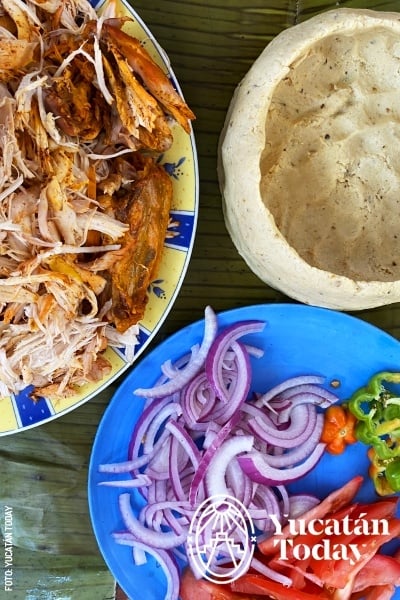 For two round mukbilpollos or one square pan approximately 40 x 27 cm (16 x 10 inches).
For two round mukbilpollos or one square pan approximately 40 x 27 cm (16 x 10 inches).
4 kg (9 lb) corn dough
0.5 kg (1 lb) pork lard
2 tomatoes
1 onion
0.5 kg (1 lb) espelón (a local bean, optional)
Banana leaves
0.25 kg (9 oz) achiote seeds
1 head of garlic
1 small cube of recado rojo (about 1 cm³)
1 kg (2 lb) chicken
1 kg (2 lb) pork
Dried oregano leaves
Cilantro
Cloves
Salt
Fresh epazote
Habanero chili
2 limes
1 bitter orange
*Most of these ingredients, including the pan, can be found at any traditional market if you buy them in advance.
Procedure for preparing pib or mukbilpollo
1. Preparing the broth
First, cook the chicken and/or pork in a large pot. Before cooking the chicken, cut a bitter orange and rub it on the chicken to eliminate any fishy smell (k’omoj). Then, rinse it thoroughly with clean water, making sure that no residue comes into contact with any plates or utensils to avoid cross-contamination.
Add enough water to the pot to fully cover the meat. If you’re using both types of meat, start by adding the pork first, as it takes longer to cook. Once the water is boiling, add the chicken. As it boils, skim off any foam that forms.
Meanwhile, on the stove, roast a piece of onion, garlic, and tomato (you can use a fork to help). Add these to the broth along with a pinch of oregano leaves, pepper, cloves, and salt. Dissolve the small cube of recado rojo in a bit of water and add it to the pot with the meat; this will give the broth its red color.
Monitor the boiling to prevent the water from overflowing and ensure the meat doesn’t overcook, as it still needs to be baked. Once the meat is cooked, remove it from the broth and place it in a separate container. For easier handling, you can shred and debone the meat, though some people prefer to leave the bones in.
Remove the seasonings (onion, garlic, epazote leaves, cloves, etc.) to leave a clean broth, and check that the salt level is to your taste.
2. Preparation of k’óol (Yucatecan thick broth or pebre)
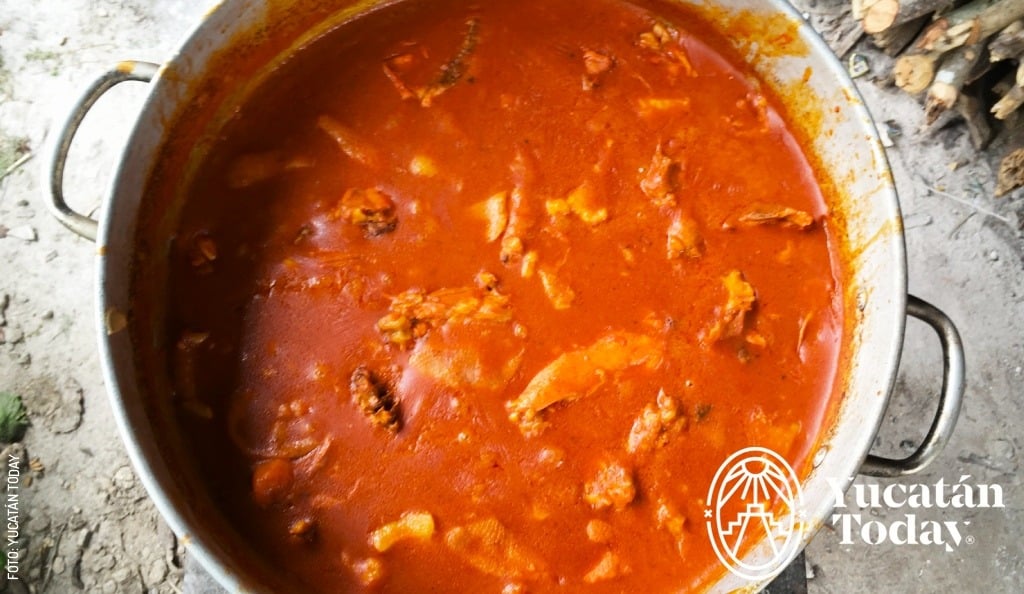
In a bowl, dissolve a ball of dough (about half a kilogram or 1 lb) in a small amount of water. Once smooth and lump-free, strain it well and add this mixture to the broth. Stir constantly to prevent lumps from forming and to keep it from sticking to the pot, until the broth thickens. This is the k’óol, which we’ll be using as a filling.
3. Preparation of the lard with achiote
Place the lard in a pan and heat it over low heat until it becomes liquid. Add the achiote seeds and let everything simmer for 5 minutes before turning off the heat. This flavored lard will be used to color the dough.
4. Cleaning the banana leaves
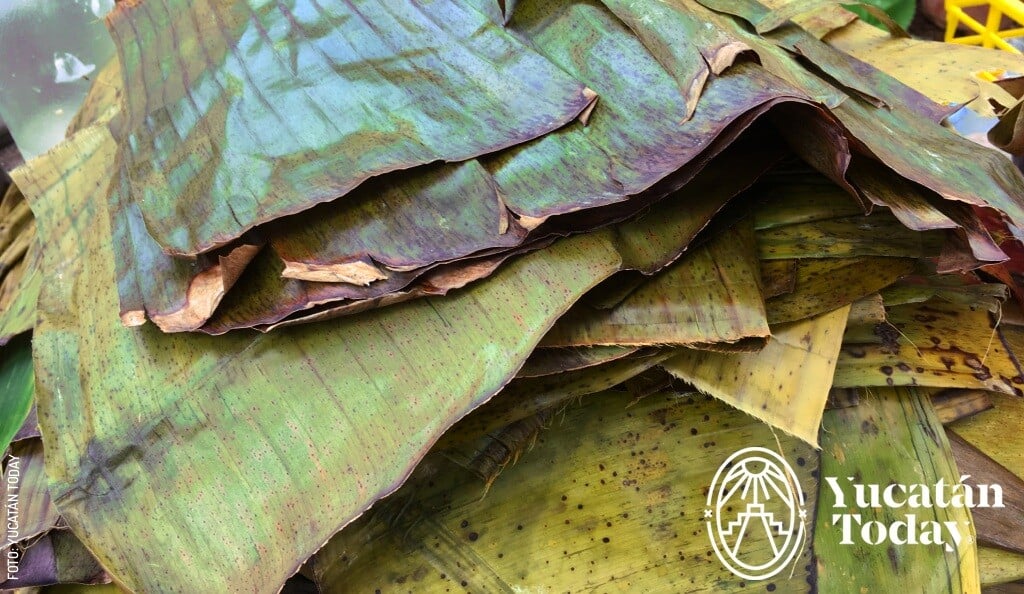
On a large table, spread out the banana leaves and clean them with a clean cloth, removing the central threads. These leaves will be used later to wrap the pib or mukbilpollo.
5. “Salad” for the filling
Slice the tomato and onion, and remove the stems from the epazote; set aside.
6. Preparing the dough
Cover the table with plastic to protect it from staining with the achiote lard, as achiote is a natural dye.
For easier handling, you can divide the dough into portions and then combine them. Gradually moisten the dough with the achiote lard we prepared earlier, using a strainer to prevent the achiote seeds from mixing with the lard. We’re aiming for a smooth and manageable dough. As you knead and mix well, add salt to taste; sample a bit of the dough to find your preferred salt level. If you're using the espelón beans, add the beans now.
7. Shaping and assembling the pib or mukbilpollo
.jpg)
Once all your ingredients are ready, it's time to "tortear" the pib, which means shaping the dough by hand. At this point, you can preheat your oven to 180º C (or 350º F) to ensure it’s properly heated when you finish assembling the pib.
You have two options here. If you’re using a “lata” or pan, line it with banana leaves and spread the dough over them to create a "container" of dough. Once it’s spread out, fill it with the k’óol, meat, slices of tomato, onion, some epazote leaves, and optionally, habanero chili. Make a masa cover that’s as flat as a tortilla; place it on top of the pib fillings. Brush the outside with a bit of k’óol to add color and prevent it from drying out too much, then cover it with banana leaves, Your pib is ready to bake!
If you’re not using a pan, first lay out the banana leaf threads (the ones you removed when cleaning the leaves) in a cross pattern on the table, then place the banana leaves on top. Spread the dough over the leaves, shaping it into a little bowl. Add the k’óol, meat, and tomato, onion, epazote, and optional chili slices.
Separately, on a large banana leaf, shape the lid; once it reaches the desired size, place it on top, trim any excess, and brush with a bit of k’óol. Wrap the banana leaves around your pib and secure carefully with the threads as if tying a package—your pib is ready for the oven.
8. Baking the pib or mukbilpollo
Place the pib or mukbilpollo in a preheated oven at 180º C (350º F). The cooking time is approximately two and a half hours. Before removing it from the oven, you can insert a knife; if it comes out dry, the pib is done. Remember, you're mainly cooking the dough, as everything else is already cooked. Whether it turns out juicy or dry depends on your preference.
9. Sides
You can roast the habanero chiles, grind them, and add a pinch of salt and lime juice.
Mukbilpollos are not served with tomato sauce; they are accompanied by habanero salsa with lime juice. Don’t forget, you should eat the first pib only after placing it on the altar in your home.
How to avoid “cold hands”
It is recommended to sprinkle a bit of salt over the mukbilpollos before putting them in the oven. This is to counteract the belief in síis k’ab (cold hands) and ensure that the mukbilpollos cook properly.
Bon Appétit!
Photography by Ely Chavarrea y Yucatán Today, for its use in Yucatán Today.
First published in Yucatán Today print and digital magazine no. 442, in October 2024, by the name of "An Easy Way to Prepare Mukbilpollo at Home".
Other delicious recipes from Yucatecan Cuisine:
- Recipe for Papadzules
- Recipe for Sopa de Lima
- Recipe for Pollo en Escabeche
- Recipe for Relleno Negro
- Recipe for Cochinita Pibil
- Recipe for Frijol con Puerco
- Recipe for Queso Relleno
- Recipe for Tamales Yucatecos
Yucatecan Dessert Recipes:

Author: Ely Chavarrea
Maya woman, mother, daughter, Maya migrant to the city; anthropologist, writer, poet, activist for the Maya language, cultural promoter, lover of flowers.
In love with Yucatán? Get the best of Yucatán Today delivered to your inbox.
Related articles
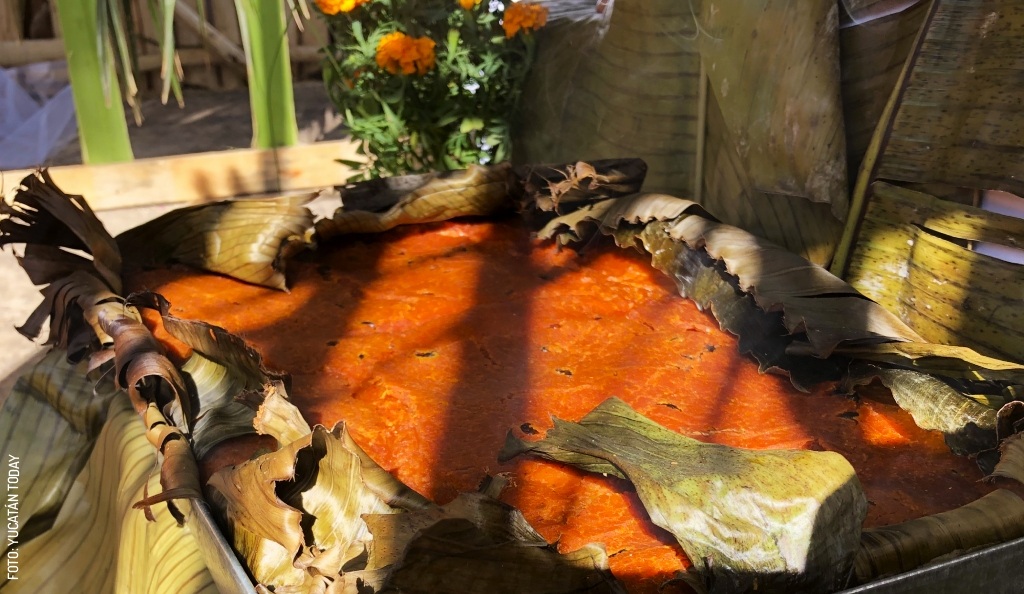
All about Pib, a traditional Yucatecan Day of the Dead dish
Everything there is to know about this delicious Yucatecan dish, a staple of the Janal Pixan season: its meaning, ingredients, history, and more.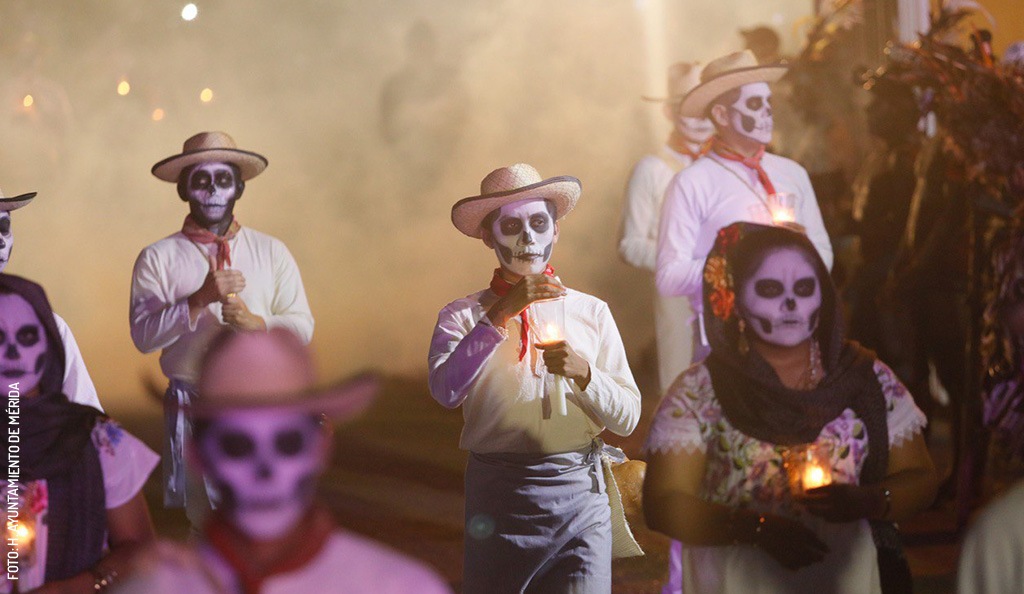
Janal Pixan in Yucatán
Enter the magic of Janal Pixan in Yucatan, learn about the rituals, altars and delicious foods of this celebration.